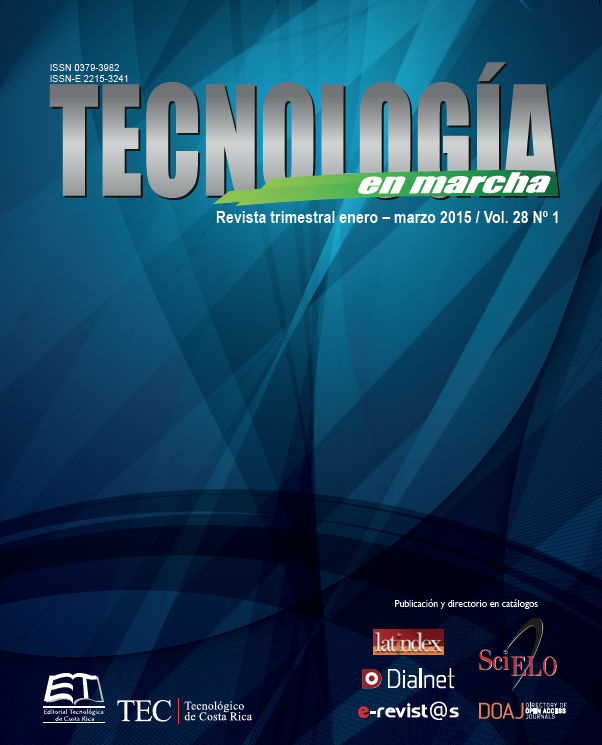Larval stage prediction model of Spodoptera frugiperda collected in fig (Ficus carica) and discovery of Apanteles sp. as its parasitoid
Main Article Content
Abstract
Spodoptera frugiperda (J. E. Smith) (Lepidoptera: Noctuidae), or the fall armyworm, is a voracious, polyphagous insect that forms large populations and has a high spread rate. This species is considered an extremely dangerous plague; one of the most destructive in the American continent. One of the main insects, found in Costa Rica that damages fig crops is S. frugiperda. This research was aimed to develop a prediction larval-stage model of S. frugiperda and determine the effectiveness of Apanteles sp. as a parasitoid. Both organisms were collected in fig plantations. To achieve this, eggs were collected and then breeding stocks were established. Stocks were bred for 38 days at 24°C and 70% relative humidity, identifying the lepidopteran as S. frugiperda by a taxonomist. We determined significant differences between the larval stages according to size, and established a quadratic prediction model. Also, we determined a Spearman correlation of 0.627 between the number of eggs laid per couple and the number of eggs hatched. Finally, Apanteles sp. (Hymenoptera: Braconidae) was identified as a parasitoid to the fall armyworm in fig.
Article Details
Los autores conservan los derechos de autor y ceden a la revista el derecho de la primera publicación y pueda editarlo, reproducirlo, distribuirlo, exhibirlo y comunicarlo en el país y en el extranjero mediante medios impresos y electrónicos. Asimismo, asumen el compromiso sobre cualquier litigio o reclamación relacionada con derechos de propiedad intelectual, exonerando de responsabilidad a la Editorial Tecnológica de Costa Rica. Además, se establece que los autores pueden realizar otros acuerdos contractuales independientes y adicionales para la distribución no exclusiva de la versión del artículo publicado en esta revista (p. ej., incluirlo en un repositorio institucional o publicarlo en un libro) siempre que indiquen claramente que el trabajo se publicó por primera vez en esta revista.

